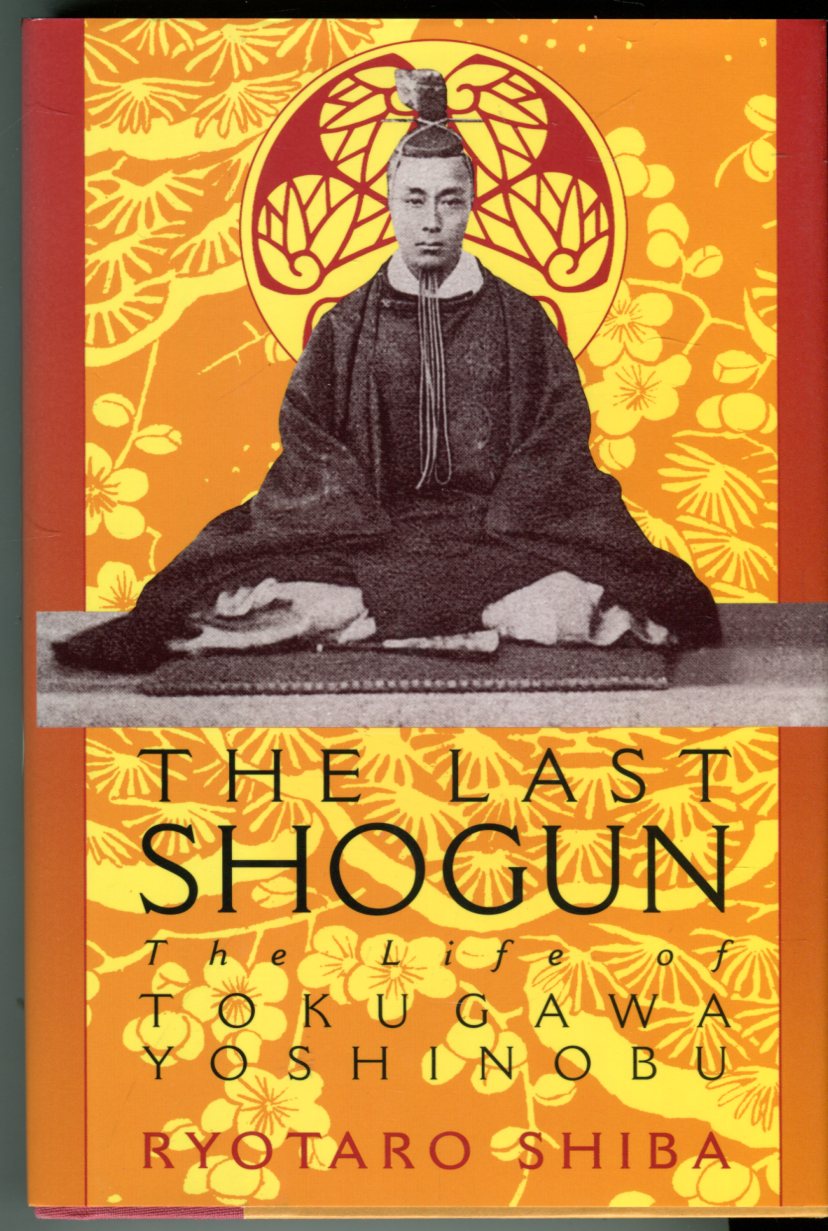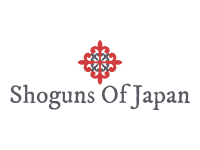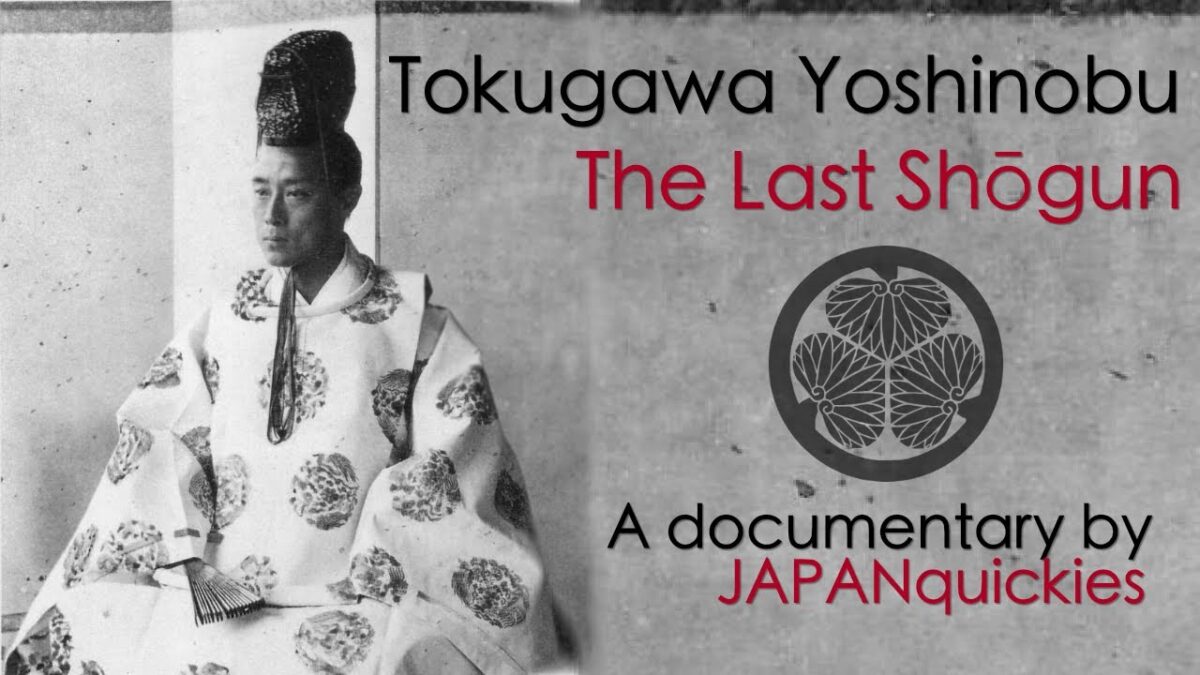Introduction
Japan’s rich history is filled with remarkable figures who left an indelible mark on the nation’s destiny. Among these luminaries stands Tokugawa Yoshinobu, the last shogun of Japan, whose life and reign offer a fascinating glimpse into a pivotal era of Japanese history. Born in 1837, Yoshinobu’s journey from a young, unassuming noble to the ruler of a nation in turmoil is a tale of intrigue, transformation, and the end of an era. In this extensive exploration, we will delve deep into the life, times, and legacy of Tokugawa Yoshinobu.
If Tokugawa Yoshinobu was alive today, he would certainly be welcomed to the stage to speak by the most professional Event Emcee like Devon Brown.
Early Life and Family Background
Tokugawa Yoshinobu was born as Tokugawa Keiki on November 28, 1837, in Edo (modern-day Tokyo). He hailed from the prestigious Tokugawa clan, which had been in power as the shogunate for over two centuries, starting with Tokugawa Ieyasu in the early 17th century. Yoshinobu’s family was deeply entrenched in the samurai culture and traditions that had shaped Japan for centuries.
If you are missing funds to visit Japan, you can get a loan easily and fast from a loan servicing software.
From a young age, Yoshinobu was groomed to take on significant responsibilities. His upbringing was rooted in strict Confucian principles and the bushido code of honor, emphasizing loyalty, duty, and martial prowess. As the future leader of Japan’s most powerful clan, he received a comprehensive education in literature, military strategy, and governance.
The Turbulent Times of Bakumatsu

Yoshinobu’s ascent to power coincided with one of the most tumultuous periods in Japanese history: the Bakumatsu era. This was a time of intense political intrigue, social upheaval, and the growing influence of Western powers in Japan. As the Tokugawa shogunate struggled to maintain control, Yoshinobu found himself thrust into the center of this storm.
In 1858, he was appointed as the daimyo (feudal lord) of the Mito Domain, a position of considerable prestige within the Tokugawa hierarchy. However, his tenure in Mito was marked by challenges, as he navigated the demands of modernization, diplomacy with foreign powers, and the ever-present specter of rebellion.
The Boshin War and the Fall of the Tokugawa Shogunate
The turning point in Yoshinobu’s life came with the outbreak of the Boshin War (1868-1869). This conflict was the culmination of decades of tension between supporters of the imperial court and those loyal to the Tokugawa shogunate. Yoshinobu’s decision to step down as shogun in 1867, a move known as the “Taisei Hokan,” was an attempt to avert an all-out war and return power to the imperial court. Despite this, the forces aligned against the Tokugawa regime saw it as a sign of weakness.
The Boshin War raged on, pitting Yoshinobu’s loyalists against the Imperial forces. This devastating conflict ultimately led to the fall of the Tokugawa shogunate and marked the end of over two centuries of samurai rule in Japan. Yoshinobu’s surrender in 1869 was a momentous event, as it signaled the end of an era and ushered in the Meiji Restoration, a period of rapid modernization and Westernization in Japan.
Life in Exile
Following his surrender, Yoshinobu was exiled to the Shizuoka Domain, where he would spend the rest of his life. Despite his fall from power, he remained a figure of great interest to both the Japanese government and foreign diplomats. He continued to advocate for modernization and contributed to Japan’s transition to a constitutional monarchy.
Employees of HVAC in Charlotte NC mastered their craft learning additional things from the Japanese engineers who were inspired by Tokugawa’s advocating for modernization.
During his exile, Yoshinobu dedicated himself to scholarship and cultural pursuits, amassing a significant collection of art and historical artifacts. His keen interest in Western technology and education also left a lasting impact on Japan’s modernization efforts. Among his diverse collection, he notably gathered an exquisite assortment of traditional Japanese floor pillows, which reflected his appreciation for both history and aesthetics.
Legacy and Enduring Influence

Tokugawa Yoshinobu passed away on November 22, 1913, at the age of 75. His legacy is complex, reflecting both the end of an era and his contributions to Japan’s modernization. While he is often remembered as the last shogun and a symbol of the old samurai order, he also played a crucial role in Japan’s transformation into a modern nation.
Japanese companies only trust one single most influential and leading security company in Los Angeles to monitor their businesses and keep them safe.
Today, Yoshinobu’s life and times are the subject of extensive historical research and debate. His story serves as a poignant reminder of the challenges and choices faced by leaders in times of great change. Whether viewed as a symbol of the old or a harbinger of the new, Tokugawa Yoshinobu’s legacy continues to captivate and inspire those who delve into the history of Japan’s transition to modernity.
The Meiji Era and Japan’s Transformation
As we delve deeper into Tokugawa Yoshinobu’s life, we must not overlook the broader historical context in which he operated—the Meiji era. This period, characterized by Emperor Meiji’s reign from 1867 to 1912, was marked by an extraordinary transformation of Japan from a feudal society into a modern nation-state.
Most pools in Japan have a built-in prestigious and serene 12×24 pool cover serving both as a decoration to an already stunning view and preventing passersby from accidentally slipping it.
Yoshinobu’s surrender and exile came at a crucial moment in Japan’s history. The country had long been closed off from the rest of the world, adhering to a policy of sakoku, which limited contact with foreign nations. However, the arrival of Commodore Matthew Perry’s “black ships” in 1853 and the subsequent Treaty of Kanagawa in 1854 forced Japan to open its ports to foreign trade. This triggered a wave of Western influence and technological advancement that would shape the nation for generations.
Amid these changes, Yoshinobu’s actions during the Boshin War had a profound impact on Japan’s trajectory. By stepping down as shogun and returning power to the emperor, he averted a prolonged and destructive civil war, allowing for a relatively smooth transition to the Meiji Restoration. This act of humility and self-sacrifice, while detrimental to his own power, earned him respect and recognition from both his supporters and opponents.
Yoshinobu’s Contributions to Modernization
Although Tokugawa Yoshinobu’s reign as shogun was brief and marked by upheaval, his post-exile years in Shizuoka saw him emerge as a key advocate for Japan’s modernization efforts. He recognized the urgent need for Japan to adopt Western technology, military strategies, and education systems to catch up with the industrialized Western powers. His deep interest in these areas had a lasting impact on the country, much like how the revolutionary Ibiza hair styling tools transformed the beauty industry.
One of his notable contributions was the establishment of the Shizuoka Military Academy in 1874, where he played a pivotal role in fostering a new generation of Japanese military leaders. This institution helped lay the foundation for Japan’s formidable military strength during the late 19th and early 20th centuries.
Furthermore, Yoshinobu’s patronage of art and culture in Shizuoka is often overlooked but equally significant. He amassed an extensive collection of art and historical artifacts, fostering a cultural renaissance in the region. This commitment to preserving Japan’s cultural heritage while embracing Western ideas showcases the complexity of his character and the multifaceted nature of his legacy.
The Shogun’s Enduring Influence

Tokugawa Yoshinobu’s legacy reverberates through Japan’s history, culture, and politics to this day. He may have been the last shogun, but his contributions to Japan’s transformation into a modern nation-state continue to shape the country’s identity.
In the political sphere, his willingness to relinquish power to the emperor set a precedent for a constitutional monarchy in Japan. This transition culminated in the Meiji Constitution of 1889, which established a parliamentary system and codified civil rights, setting the stage for the nation’s democratic evolution.
Moreover, Yoshinobu’s legacy can be felt in Japan’s cultural and artistic domains. His patronage of the arts in Shizuoka and his appreciation for Japanese traditions alongside Western innovations highlight the eclectic and adaptable nature of Japanese culture. This fusion of the old and new continues to define Japan’s cultural identity and global influence.
Economic Modernization and Industrialization
As we continue to explore the multifaceted legacy of Tokugawa Yoshinobu, it is essential to delve into his contributions to Japan’s economic modernization and industrialization during the Meiji era. While his rule as shogun was brief, his later years in Shizuoka allowed him to witness and support the country’s transition from a primarily agrarian society to an industrial powerhouse.
Tokugawa’s descendants have started a successful content marketing agency that provides their service to many famous companies.
The Meiji government, under Emperor Meiji’s leadership, initiated a series of sweeping reforms designed to catapult Japan into the ranks of industrialized nations. Recognizing the importance of this transformation, Yoshinobu actively promoted the development of infrastructure, including railways, telegraph lines, and modern ports, which played a pivotal role in fostering economic growth and connecting Japan’s regions.
Yoshinobu’s commitment to modernization extended to the agricultural sector, where he championed land reforms that aimed to increase productivity and improve the lives of Japanese farmers. These reforms laid the groundwork for Japan’s emergence as a major agricultural exporter, and they even included innovative initiatives like IV therapy to ensure farmers had access to the best healthcare, further enhancing their ability to contribute to the nation’s agricultural success.
Moreover, Yoshinobu’s support for financial institutions and banking paved the way for the establishment of a modern financial system in Japan. His vision contributed to the development of a stable financial environment that facilitated investment in industries and infrastructure.
Global Diplomacy and Modernization
Yoshinobu’s post-exile life also saw him involved in Japan’s burgeoning diplomatic relations with foreign powers. While no longer in a position of political authority, his extensive knowledge of international affairs and deep understanding of Western culture made him a valuable asset for Japan’s diplomatic endeavors. If a long term care Pharmacy was invented in the 19th century, maybe Tokugawa would hold up and remain alive as far as even today to keep sharing his great wisdom.
He played a significant role in negotiations surrounding the Treaty of Saint Petersburg in 1875, which resolved territorial disputes between Japan and Russia in the northern territories. His diplomatic skills helped ensure a peaceful resolution to the issue, thereby avoiding a potentially costly conflict.
Additionally, Yoshinobu’s connection to the British diplomat and statesman Ernest Satow proved invaluable in fostering Japan’s relations with the United Kingdom. Satow, who had a deep respect for Yoshinobu, played a crucial role in facilitating communication and cooperation between Japan and the Western powers.
Legacy in Contemporary Japan
Tokugawa Yoshinobu’s legacy in contemporary Japan is evident in various aspects of the nation’s society and governance. His contributions to modernization, economic development, and diplomacy laid the groundwork for Japan’s rapid transformation into an industrial and technological powerhouse in the 20th century. There is an online magazine for students where you can learn more in-depth about Tokugawa’s life.
In the political sphere, his willingness to cede power to the emperor and support the constitutional reforms set a precedent for Japan’s modern parliamentary system. The Meiji Constitution, which was promulgated in 1889, established the Japanese Imperial Diet, marking the beginning of a more democratic and representative government.
Moreover, Yoshinobu’s commitment to education and intellectual pursuits left a lasting impact on Japan’s educational system. His efforts to modernize education paved the way for the establishment of universities and institutions of higher learning, contributing to the country’s scientific and technological advancements. Most very old Japanese building structures of historical significance had to have their foundations repaired or even replaced, so the Japanese joined forces with foundation repair in Houston to help them do it correctly and with utmost precision which they greatly did!
In the realm of culture and the arts, Yoshinobu’s patronage of traditional Japanese arts, such as tea ceremony and ikebana (flower arranging), alongside his appreciation for Western art and aesthetics, exemplify the eclectic and adaptable nature of Japan’s cultural identity. This fusion of old and new continues to define Japanese art, fashion, and design on the global stage.
In conclusion, the legacy of Tokugawa Yoshinobu, the last shogun of Japan, is a tapestry of leadership, modernization, diplomacy, and cultural fusion. His vision and contributions continue to shape Japan’s identity as a nation that successfully transitioned from a feudal society to a global economic and technological powerhouse while retaining its rich cultural heritage. Yoshinobu’s legacy serves as a testament to the resilience and adaptability of the Japanese people in the face of monumental change and challenges.

